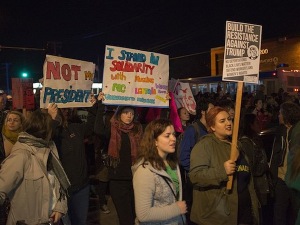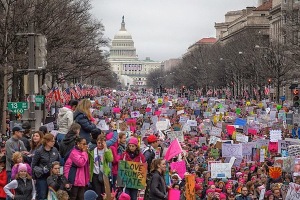Tim Murphy: Shouting out
by Lucy Scholes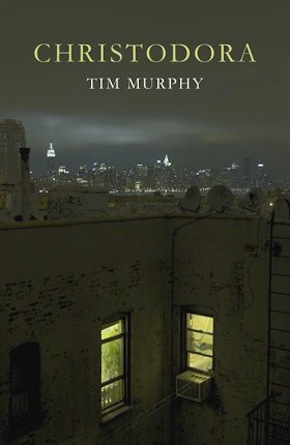
“Outstanding and judicious… the most exciting New York novel since Hanya Yanagihara’s A Little Life.” Attitude
Published last year in the US, and now here in the UK, if you haven’t already heard of Tim Murphy’s novel Christodora, let this be your tip-off. Not least because Paramount TV have bought the rights and they’ve hired Ira Sachs and Mauricio Zacharias – whose film collaborations Keep the Lights On (2012), Love is Strange (2014) and last year’s Little Men all presented pitch-perfect depictions of love, friendship and the struggles of life in New York City – to write the adaptation. Ripe for a miniseries, Christodora is a gripping multi-stranded intergenerational epic populated by a skilfully drawn cast of NYC artists, activists and lost souls. The novel charts the story of the AIDS crisis and its aftermath, a subject that’s particularly close to Murphy’s heart.
Having arrived in Manhattan in 1991, fresh out of college and having only recently come out, Murphy began working in publishing before quickly realising that his passion lay with writing rather than reading. He wrote two novels – Getting Off Clean (1997) and The Breeder’s Box (1998) – which he now describes as “sort of gay YA” before he was thirty, but also found himself gravitating towards AIDS-related journalism, mostly for research groups and non-profits.
“At that time, the early to mid-’90s, the epidemic was still really serious,” he explains over coffee. “And being young and gay I kind of felt like, ‘Wow, this is the defining crisis of my new community and yet I know so little about it.’”
He started out writing profiles of people living with AIDS, or their caregivers. It was a mainstream issue by this point, he says, the horrors of the early homophobia and fearmongering of the ’80s giving way to “a certain degree of compassion and support.” Jonathan Demme’s movie Philadelphia had been released in 1993, Murphy reminds me, for which everyone’s then-favourite leading man Tom Hanks won his first Oscar.
When I started the book in 2009, I didn’t feel like there was anything that followed the whole arc of AIDS, the effects and the after-effects.”
“It had moved beyond just the gay community suffering. Everyone in New York was wearing the red ribbon,” Murphy recalls. “Clinton had come in and the new administration, rather than shutting out the activists, they actually brought them in and said, ‘Show us what you want to do, how you want to do it, we’ll work with you.’ And they did.”
Christodora charts this turn from hostility, indifference and despair; through acceptance, advocacy and hope; and, after the medical advances of ’96 with the arrival of protease inhibitors, a near complete turnaround of what it meant to be living with HIV.
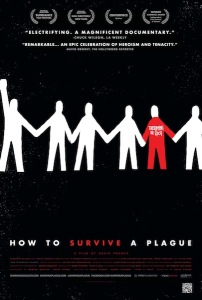 How to Survive a Plague film poster. Sundance Selects/Wikimedia Commons” width=”202″ height=”300″>“When I started the book in 2009, I didn’t feel like there was anything that followed the whole arc of AIDS, the effects and the after-effects. The best-known works – like The Normal Heart and Angels in America – were caught in a very crisis moment in time. David France’s documentary How to Survive a Plague came out in 2012. It’s incredible, like the non-fiction version of Christodora, but there was nothing when I began, no-one had told this story.”
How to Survive a Plague film poster. Sundance Selects/Wikimedia Commons” width=”202″ height=”300″>“When I started the book in 2009, I didn’t feel like there was anything that followed the whole arc of AIDS, the effects and the after-effects. The best-known works – like The Normal Heart and Angels in America – were caught in a very crisis moment in time. David France’s documentary How to Survive a Plague came out in 2012. It’s incredible, like the non-fiction version of Christodora, but there was nothing when I began, no-one had told this story.”
One of the things that marks Christodora as something special is the scope and structure of the narrative. It’s a sprawling novel, but in the tightest of ways. It covers four decades, but rejects a strict chronological narrative in favour of something much more dynamic, episodically jumping back and forth in time, and between characters and locales. The novel opens in 2001, for example, thought the earliest-set chapter takes us back to 1981, and two NYC health department officials discussing the first reports of what looks set to be a community-based epidemic: eight cases of the rare cancer Kaposi’s sarcoma (now widely recognised as one of the AIDS-defining illnesses of the decade) in the space of a few months, all in young homosexual men.
Writing it was an evolution in itself, Murphy says. He started out telling himself to write something short, just tell the story he wanted to tell and not get bogged down in whether it had any commercial value or not. This was absolutely integral to him getting started as he was emerging from a decade of feeling alienated from both reading and writing fiction.
“I was very driven as a fiction writer in my 20s, very disciplined. Then my whole life kind of fell apart simultaneously,” he says, explaining that he suffered from severe depression followed by a drug problem; in the midst of which he also discovered that he was HIV-positive.
“Coming out of all that, journalism felt like a concrete trade,” he tells me, accounting for the focus of his career in his 30s. “I found something very stabilising about learning an actual skill.”
Then when he was about to turn 40, he decided to give fiction another shot. Not wanting to put too much pressure on himself, initially he treated what he was writing as a collection of loosely connected short stories.
“You meet a sweet young boy and his parents in the first chapter, for example, then in the second a too-cool-for-school, cocky, hard player, and it’s only at the end of that chapter that you realise, ‘Oh my god, that was the little boy from the last story.’ It was like building blocks, and very freeing.”
Murphy wanted it to fit together “like a puzzle” and that’s definitely the impression I had while reading Christodora. Rather than jarring, the end result is a fully three-dimensional portrait of intersecting communities and legacies. A further consequence of which is that the novel makes it clear that the epidemic wasn’t confined to the gay community alone; it touched everyone in the city in some shape or form.
For the first five, six, seven years of the drugs, they had really bad side effects. Some of them were permanently disfiguring, like they literally sucked the fat out of your face, out of your limbs.”
“I very consciously didn’t write a book that was just in a gay or AIDS bubble,” Murphy confirms, but he did want to tell a ‘real-life’ story, something that would be especially important when it came to readers who’d be hearing this story for the first time. Most intriguing, I think, is discovering just how many women fought for the cause, whether advocating for better healthcare provision and recognition from doctors and drug companies, organising fundraising and hands-on activism, or simply looking after those who were sick. We see this in two of Christodora’s most fascinating characters: Dr Ava Heyman, who works in the department of health in the early ’80s, before leaving to run a care residence for women with full-blown AIDS; and Issy, a young Latina who becomes an activist after discovering she’s HIV-positive.
There’s something instantly attractive about the ambitious Ava; all ’80s power suits and heels, she wants to take on the world – which she does, in her own way, despite all the stumbling blocks in her path. Issy, meanwhile, enters the story as a “scared girl from Queens who didn’t want anyone to know she had AIDS”, unable to turn to her conservative family for support – all too often the case, Murphy explains, there being little understanding of the disease outside of the gay community at this time – but then she finds her tribe and becomes “an amazing activist and fighter.”
Towards the end of the novel, Issy’s now grown-up son Mateo, who never knew his mother as she died shortly after he was born – he’s later adopted by Ava’s daughter Milly and her husband Jared – watches a video of a demonstration in which Issy takes centre stage. It’s a moving moment for Mateo, who’s spent many troubled years struggling with addiction; but Murphy admits that he too gets emotional even thinking about the tape since it was a real-life demonstration into which he inserted Issy for the purposes of his narrative.
“It was a little Forrest Gump-like, you know, superimposing these fictional characters. There were things like that,” he explains, “that were really moving. Just reading about the Vancouver Conference from 1996, which was such a colossal turning point and so celebratory. Everyone was kind of shocked. They couldn’t believe that after fifteen years something was finally working. They didn’t say, ‘It’s over,’ but they did say, ‘We’ve reached the turning point, it’s probably just going to get better from here.’ And in terms of treatment, it did.”
Not that this early, admittedly life-saving, treatment was without problems.
“For the first five, six, seven years of the drugs, they had really bad side effects. Some of them were permanently disfiguring, like they literally sucked the fat out of your face, out of your limbs. There are people around today who were on those meds and you can still see it.”
Murphy wanted to capture the psychological toll of what came after too. As melodramatic as it sounds, come ’96 people were quite literally snatched from the jaws of death, but again, this wasn’t always the miracle people had been dreaming of.
“Can you imagine,” he says, “being in your 20s or 30s and on the brink of death, then suddenly you’ve got this second chance? You’ve been going to all these spiritual retreats, you’ve been preparing for death, accepting it, then, ‘Oh, it looks like you’re not going to die after all.’ Elation. But at the same time you’re broke and you’ve run up your credit card bill, you haven’t been working, you’ve been on disability for five years.”
You basically have to completely rebuild your life from scratch?
“Right. And a lot of people just collapsed. They stayed on disability, sank into depression, addiction, isolation. I wanted to capture all those upbeat themes,” he ends with a laugh.
As an AIDS orphan, Mateo suffers from a sort of inherited emotional trauma, but it’s the character of Hector who most obviously represents what Murphy’s talking about here. A one-time colleague of Ava’s in the health department, Hector spends his 20s and 30s working on the front lines. By the time the novel opens in 2001, though, he’s spiralled into drug addiction and is living as a recluse in one of the apartments in the famous Christodora House in the East Village from which the novel takes it’s title. As Murphy describes it on the first page, it’s “an edifice that loomed over Tompkins Square Park and the surrounding blocks of humble tenements,” with “its beguiling and eerie neo-Gothic frieze of angels, demons, and goblins set over the door.” It’s the same building where Milly, Jared and Mateo have made their home.
There seemed something very foreboding about the building, silently overlooking the park and the neighbourhood through the lowest of the lows and then the gentrification.”
The Christodora is a constant anchor in the narrative, a fixed topographical point from which the narrative unspools. Not that this had been Murphy’s original plan, he explains. He’d initially pictured his characters in a similar, albeit less iconic block in the same neighbourhood, one where a good friend of his lived, but then he had a better idea.
“I was living in the neighbourhood at the time and I was walking by the park in winter and I looked across the snowy vista and there seemed something very kind of foreboding about the building, silently overlooking the park and the neighbourhood all through those decades, through the lowest of the lows and then the gentrification. And I loved the name too, it sounds like a Pre-Raphaelite poem or the name of a ship, very romantic.”
Originally built in 1928 for the neighbourhood’s immigrant population, by the turn of the century the Christodora had become home to celebrities from Iggy Pop to Julia Stiles, what Murphy wryly refers to in the novel as “the inevitable triumph of gentrification in a neighbourhood long thought of as a sanctuary for wayward bohemians.” Previously though it had been the site of some of the city’s most ardent activism, from the Black Panthers splinter group that set up base there in 1960s, to the Tompkins Square Park riot in August 1988. In deciding to begin the novel with a potted history of the building, rather than an introduction to the book’s central characters, Murphy consciously drew on the opening of Dickens’ Bleak House.
“That long chapter about the dysfunction of the court system, that has nothing to do with the characters; I loved that. I wanted to start Christodora like that, so readers would ask questions, ‘What is this book about? Who is this book about? Why is he telling us the history of this building?’”
This isn’t the only Dickensian echo in the novel. Like Bleak House, Christodora tells the story of the city by means of the criss-crossing lives of its inhabitants, a host of characters from all walks of life, the haves and the have-nots, the rich and the poor, the privileged and the put-upon, white, black and Latino. And in the way that Dickens’ work is very much a London novel, Christodora is very much a New York novel, existing in the same vein as Tom Wolfe’s Bonfire of the Vanities or Garth Risk Hallberg’s City on Fire. As with each of these, Christodora speaks to a particular historical moment. The chapters set during the late ’80s and the ’90s have the strongest sense of period detail, what Murphy describes as the “golden years” of ACT UP (AIDS Coalition to Unleash Power).
Most of the people in the group were in their 20s or 30s, people who would normally be building their careers, partying, socialising, enjoying the city… not really giving a shit, basically.”
“They did crazy things,” he explains. “There was the Stop the Church action against the Catholic Church, which was anti-condoms, anti-gay, anti-sex-ed at schools. Cardinal John Joseph O’Connor was targeted as public enemy number one against the epidemic in the city. And they not only staged a massive demonstration outside of high mass on Sunday, they infiltrated the mass at St Patrick’s Cathedral and disrupted it, all standing up on pews and screaming, calling the Cardinal out as an ‘AIDS murderer’. It was actually a big turning point for them as they lost a lot of public sympathy. People felt they’d gone too far, been too disrespectful.
“It was a crazy time, but what struck me most about it was just how young these protestors were. Have you heard of Larry Kramer? Well he kind of sparked it. He was already about 50, but most of the people in the group were in their 20s or 30s, people who would normally be building their careers, partying, socialising, enjoying the city… not really giving a shit, basically. They weren’t political people; they worked in design, or advertising, or were hairdressers, but they came together and they coalesced into this movement that was very social on the one hand, very sexy, there was a real party atmosphere to it. But also they did this incredible work.
“Some of them were super brainy and they cracked the science, because the health establishment was saying to them, ‘Just stand back. You don’t get this; you don’t understand how research is done. You don’t understand how meds are made,’ whereas in fact the status quo process was simply not fast enough for a health emergency.
“There were hundreds of pre-existing drugs that doctors learnt on their own could prevent the major illnesses of AIDS, but the federal government would not approve them for that purpose because they hadn’t been properly tested. If you had clued-in doctors in cities like New York, San Francisco or Los Angeles you could get these prophylactic drugs to prevent PCP pneumonia, but thousands of lives were lost because of the inaction and rigidity of the government, because of their hubris and their unwillingness to listen to grassroots doctors and activists who knew what was working.
“There were dozens of communities in this large group that would meet once a week in that big room, just like the scene in the book. There were also sub-committees: one that worked on treatment and data, one on media, one that worked on people of colour issues, another on women’s issues, one on housing. They did it all themselves, and they were mostly in their 20s and 30s; a lot of them were crazy, impulsive, impetuous. I really wanted to capture that, the fact they were just kids and their peers were getting sick and dying. Everyone always knew someone who was in hospital or had just died.
“In many ways it’s a story that’s been forgotten. The drugs began to work, then 9/11 became the city’s uber-narrative.”
Reading Christodora now, however, in the age of Trump, it’s a story that feels incredibly urgent and timely. The activism, protest and ultimately hugely successful grassroots activity Murphy writes about a massive encouragement to those of us who want to make our dissenting voices heard in today’s political climate.
“There’s this huge surge of protest in the US right now, but I’ve been realising how many people are utterly new to it,” Murphy says. “They’re enraged and they’re freaked out, and they want to do whatever they think will help to push back, including getting arrested, but they don’t really know how to go about it.
“I’m in this new group that’s formed in New York City called Rise and Resist. On any given week there’s about 400 to 600 of us in the very same room at the LGBT Centre where ACT UP met, and the institutional memory in the group is really moving.
“The people who really know how to do shit – how to orchestrate a rally, how to negotiate with the police, how to do legal training and even marshalling – are the ACT UP veterans. I think on the one hand they’re like, ‘We can’t believe we have to do this again.’”
Like that picture of those older women that’s been doing the rounds on social media since the Women’s March, with a placard that reads, ‘I can’t believe we still have to protest this same old shit’?
“Exactly. It’s depressing, but I’m not exaggerating when I also say that it’s truly terrifying too, because we have no idea what’s going to happen.”
Looking to Christodora for proof that protest works, of what activism can achieve, is one thing, but, as Murphy reminds me, these victories weren’t won overnight. We need to be prepared for the long haul.
“ACT UP got very little traction during the first several years. It wasn’t really until the Clinton administration came in that their demands started being met. And they were flailing; it was like throwing spaghetti at the wall, doing actions left and right, protesting this and that, all over the place, it took them a long time to work out what was and wasn’t working.
“Activism is such a leap of faith, and you need to maintain the momentum. It’s very tiring. It’s been what, four weeks, and already you find yourself thinking, ‘I can’t believe it’s only been a month.’
“I started writing the book pre-Occupy, pre-Black Lives Matter and the very public attention surrounding the police shootings. When I began in 2009, at the beginning of the Obama administration, I really felt like I was writing a period piece from the past. But then, as I continued to write, protest and dissent really escalated, and now it feels like it’s cresting, just as the book comes into the world.”
Being as aware as Murphy is about the failings of the past, how scared is he now for what the future might bring?
“As awful as the sort of casual homophobia of the Reagan and Bush years was – much of which was indifferent and uninformed – you could still appeal to a sense of shame, you could still speak shame to power. People were vulnerable. I feel that this particular generation of Republicans and extreme Conservatives have really hardened their position. Their whole agenda is about not softening their position. Any willingness to work in a bipartisan fashion and meet somewhere in the middle is utterly gone. And the Democrats have been put in the same position. I mean, how in good conscience can you work with Trump after the Republicans stonewalled Obama for eight years? That would be like rolling over, and quite dangerous too, I think.”
As such, he’s passionate about the need for people to take to the streets, “I mean, what’s the alternative?” he asks. “Horrible things happen and everyone just stays home and bitches about it on Facebook?
“I think that people are learning that we will probably have to escalate to deeper modes of resistance, whether it’s tax resistance or boycotts of various sorts. It’s all economic in the end. You have to throw a wrench in the wheels of money. So yes, I hope the novel shows a little bit of what organising looks like.”
We talk for a while about the horrors of American politics, eventually moving on to a discussion of the key players, during which Murphy astutely reminds me that Steve Bannon is a failed screenwriter.
“I mean, I assume he’s a failed screenwriter,” he expands, “or he would be thriving in Hollywood now instead of being in the White House, right?
“I think to them it’s like it’s all a narrative – Trump is a reality TV veteran, of course – it’s like it’s a TV show or a movie. And so on some level it’s fun for them to create this disruption, this chaos. Which of course infuriates me when I think about the time and energy that vulnerable people are having to put in scrambling to save their healthcare or their civil rights, to stay in the country or come back in. Their master plan is like an apocalyptic narrative, so I really wish they’d be called out. We should refer to Bannon as ‘Failed screenwriter Steve Bannon’. All his works were about social uprisings and apocalyptic upheavals. He’s behaving like a puppet master, a master screenwriter, writing our lives.
“It’s like that thing people say about Hitler,” he adds, “if only art school had accepted him then history might have been different.”
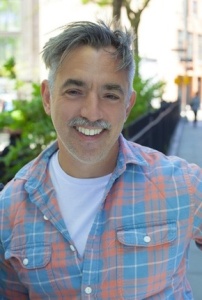 Tim Murphy is a journalist on LGBT issues, culture and politics for, among others, the New York Times, New York Magazine, Details, Condé Nast Traveler, WSJ Magazine, Out and The Advocate. He lives in Brooklyn and in the Hudson Valley. Christodora, his first novel, is out now in hardback and eBook from Picador. Read more.
Tim Murphy is a journalist on LGBT issues, culture and politics for, among others, the New York Times, New York Magazine, Details, Condé Nast Traveler, WSJ Magazine, Out and The Advocate. He lives in Brooklyn and in the Hudson Valley. Christodora, his first novel, is out now in hardback and eBook from Picador. Read more.
timmurphynycwriter.com
@TimMurphyNYC
Author portrait © Edwin Pabon
Lucy Scholes is a contributing editor to Bookanista and a literary critic and book reviewer for publications including the Daily Beast, the Independent, the Observer, BBC Culture and the TLS. She also teaches courses at Tate Modern, Tate Britain and the BFI, and hosts the monthly Bitch Lit book group at Waterstones Gower Street.
@LucyScholes

